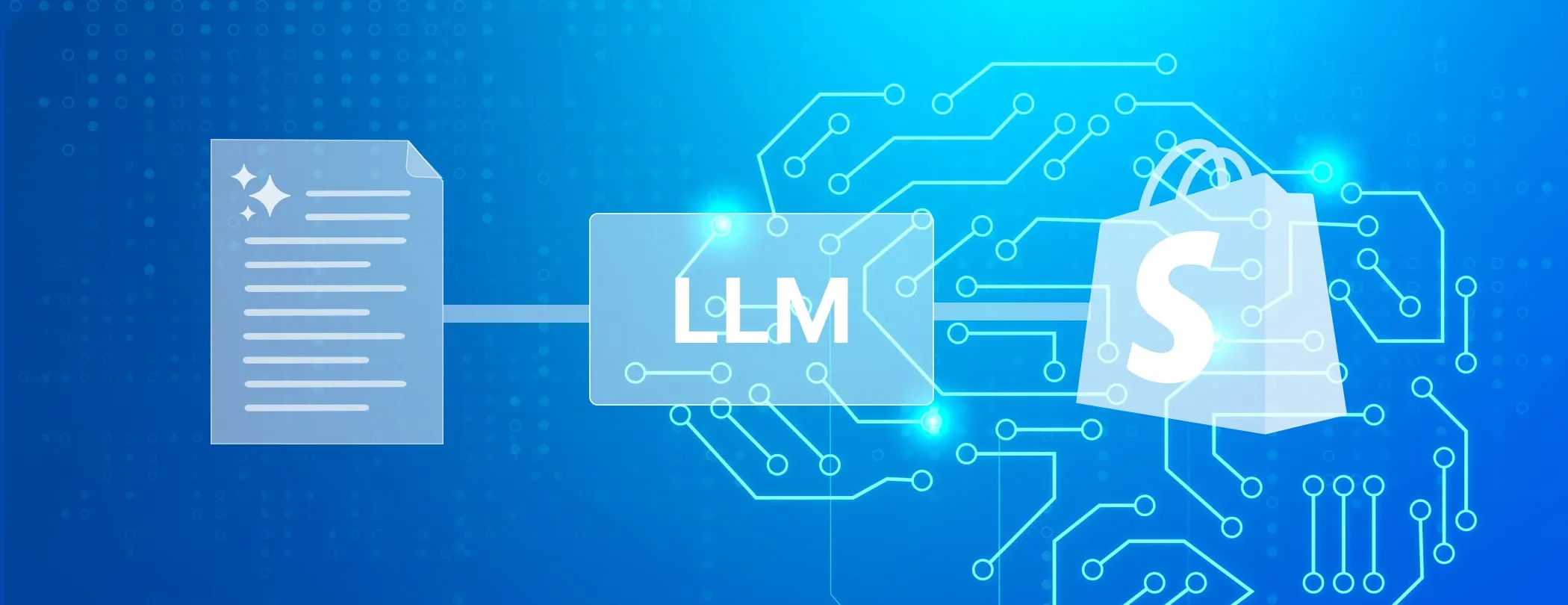
If you're looking to attract audiences to your Shopify store from LLMs, such as ChatGPT, and want to get into Google AI overviews, your first step should be to read our LLM optimization guide. Here, we've compiled all the necessary information and steps to make your store visible for AI systems.
TL; DR: LLM optimization for Shopify merchants
LLMs evaluate content based on five factors: semantic coherence, source credibility, content freshness, topical depth, and information consistency.
LLM optimization is the process of implementing techniques that can positively influence the content assessment factors.
Tips for successful LLM optimization for a Shopify store:
How Large Language Models work
Large Language Models (LLMs), such as ChatGPT and Perplexity, operate based on vast amounts of training data and machine learning techniques, enabling them to comprehend not only words but also the context, tone, and intent behind the information they process.
When analyzing website content, LLMs break it down into smaller chunks to identify proper relationships between concepts and understand content relevance in relation to user input. Learn more about how this processing works in our article on Retrieval Augmented Generation (RAG).
How do LLMs actually evaluate the content when generating answers? The assessment factors are as follows.
-
Semantic coherence. LLMs analyze how logically and meaningfully your content is organized.
-
Source credibility. LLMs evaluate the trustworthiness of your website.
-
Content freshness. LLMs check how recent the information on your site is.
-
Topical depth. LLMs assess how thoroughly your content covers the topic.
-
Information consistency. LLMs verify whether your website provides contradictory information and whether your content aligns with other trusted sources.
Which content types typically get the most visibility in LLMs?
Original research and findings with expert quotes.
Structured content and documentation
Time-sensitive content with the most current information
User-generated content and discussions
Bearing this general information in mind, we will better understand the best LLM optimization practices for Shopify stores.
What is LLM optimization?
LLM (Large Language Model) optimization involves techniques that make your content more visible to AI models, allowing them to evaluate it as worth using in answers to user requests. Just like search engine optimization (SEO) boosts your rankings in Google, generative engine optimization (GEO) and LLMO improve your content visibility in LLMs.
Why LLM optimization matters for ecommerce and Shopify stores
Your store's visibility in various AI tools, such as ChatGPT, Google AI Overviews, Gemini, Claud, and others, provides multiple advantages.
You get more organic/referral traffic that impacts the overall sales.
You establish your brand awareness across AI sources.
Your customers may get personalized product suggestions.
Your content is consistently presented across different channels.
Top 10 tips to optimize your Shopify store for LLMS
How to actually ensure LLMO for Shopify merchants? Let's review the most crucial points you should consider.
#1 Implement the llms.txt file
The llms.txt file for LLMO is something like robots.txt for Shopify SEO. By providing LLMs with this file, you allow them to access your content and use it to retrieve information for user queries in a manner you prefer. You can either manually add it to your root folder or use a simple app, such as DS - AI LLMS.txt Generator by DigitalSuits.
By installing and activating it, you enable automatic generation and regular updates of your llms.txt file for products, pages, blogs, and collections. The app supports all popular LLMs and handles over 10K items. Learn more about how DigitalSuits' LLMS.txt Generator works.
#2 Add schema markup
Schema markup, also known as structured data, is code, typically in JSON-LD format, embedded in product, review, article, and other pages to enable search engines and AI systems to understand your content semantically. Adding the markup is crucial for both your SEO and LLMO for Shopify, since it helps the systems summarize your content and highlight the main points. Based on this information, your content may be referenced by AI tools, such as Google AI Overviews.
You can add schema markup directly to your Shopify theme, following schema.org standards. For example, to add a product schema, you need to go to your Shopify Admin → Online Store → Themes → Edit code → Sections → product-template.liquid. Here, you need to add a relevant JSON-LD block inside the <head> section. The tool that can help you add structured data is Google's Structured Data Markup Helper.
#3 Optimize content for AI readability
To properly optimize a Shopify store for LLMS, instead of focusing on keywords in your product descriptions, make a shift to a more conversational language. The information you add should precisely correspond to user intent. For example, if they're looking for the best sneakers, the description of your boots should address this request in a human-like style.
So, adding a description that includes all the characteristics using conversational phrasing, such as "The pair of leather boots that keeps you confident in everyday life", would be better than just a list of characteristics.
The tools like Google Trends and Ahrefs can help you find which long-tail requests people use in your niche, while Google AI Overviews will show you how AI handles such requests. You will also benefit from adding use-case descriptions and scenarios for your products right on the Shopify PDP or in your blog. This is helpful because people typically search for products for specific situations, such as "the best winter-ready backpack for a five-day hiking tour in the national park".
#4 Create a comprehensive FAQ section
With the FAQ section, which includes concise information about your products and services, you provide LLMs with the structured information they prefer. You can base your FAQ on customer logs, users' questions on relevant topics, and competitor content analysis. Additionally, answering questions like "Which size will fit me?" enhances customer satisfaction and reduces bounce rates when customers land on your product pages.
#5 Keep content updated
Since LLMs prefer fresh content, ensure that your store contains the latest information, based on new trends and company updates. By ensuring that your policies, pricing, and stock information are up to date, you also provide relevant data for your customers in AI systems, eliminating frustration. Shopify CRM and Shopify ERP integration would be beneficial for accessing real-time data on availability, pricing, and more.
#6 Add alt texts for images
Since product images are among the most important elements of store pages, you need to make them visible for AI crawlers so that they perceive them as valuable information. To do this, add descriptive (instead of generic) alt texts for every image. For example, instead of writing just "black sneakers", you could add "women's black leather sneakers for sports and casual living" to give more background regarding the product.
#7 Build an internal linking strategy
Just as it does for search engine crawlers, well-structured hierarchical internal linking makes it easier for AI systems to parse your website's structure and understand content relationships within your site. This way, they can assess your topical depth and access in-depth pages, such as FAQs, to establish trust in your source and accurately and fully represent your content to users.
#8 Incorporate user-generated content
User-generated content (UGC) is a powerful credibility signal for LLMs since content such as client reviews or testimonials adds to natural language diversity, content recency and dynamism, and broadens the context. This way, the model fills knowledge gaps, uses new semantics that could be more relevant for real-world user queries, and forms a richer representation of your product or a blog topic.
To implement UGC in your store, you can integrate Klaviyo with your Shopify store and enable its reviews app, or use other services, such as Opinew and Covet, to additionally collect photo and video reviews from Instagram. To get fresh reviews from your customers, set up post-purchase emails, asking them to submit their feedback.
#9 Use semantic keywords
To ensure the conceptual depth of your content, it's recommended to use varied vocabulary. For this purpose, you can create topic clusters for your pages, identifying and incorporating synonyms, related phrases, locations, and other relevant keywords that go beyond just basic terms.
For example, the semantic keywords strategy for a product page with sneakers may include a few clusters:
Core product cluster with words, such as running shoes, trainers, athletic footwear
Use-case cluster for intent-based AI prompts with such phrases as gym training shoes and basketball sneakers
Material and design clusters with words, such as leather sneakers and recycled soles, and more.
The tools for creating such clusters are SemRush, Ahrefs, and AI tools like ChatGPT.
#10 Monitor AI traffic and visibility
By tracking AI visibility of your store, you can find out whether your LLMO for Shopify works and understand which AI channels generate the most traffic. This lets you rethink your strategy and refine it for better results.
Which monitoring tools are helpful?
Shopify and Google Analytics enable you to track referrers, such as chat.openai.com and bard.google.com.
Ahrefs and SemRush provide AI snippets tracking for ChatGPT, Perplexity, Gemini, and Claude.
The future of LLMO for Shopify merchants
LLMO is largely in its early phase, and it has much in common with SEO, having, though, its own specifics. So, the best approach now is combining traditional SEO and LLMO techniques for your Shopify store to ensure stable growth of organic traffic and attract new customers who find your products through relevant searches.
Still, LLMO for ecommerce is rapidly evolving, and you should be prepared for future trends, such as voice commerce and image AI search, fact-checking, and an entity-first approach, which requires that your brand and product entities are interconnected across channels. You should also be prepared that the llms.txt file, which is now experimental, will become a universal AI-crawling standard.
Given the rapid AI evolution, staying current with the latest trends boosts your chances to compete in the market and to get stable revenue. If you need help optimizing and updating your Shopify store for new standards, don't hesitate to contact the DigitalSuits team for a consultation. Our team has in-depth expertise in Shopify development that helps us build high-quality ecommerce solutions and solid knowledge in AI development and AI integration, which enables us to technically support LLMO strategies.
Frequently asked questions
What metrics indicate successful LLMO implementation?
The best way to measure your LLMO success is to analyze various metrics, such as the following ones:
AI mentions and citations in AI systems
Referral traffic from AI platforms
Click-Through-Rate (CTR) from AI traffic
Can blog posts improve AI visibility for my Shopify store?
Yes, adding a blog with educational content to your Shopify store allows you to build a long-term LLMO strategy and position your brand as an authoritative source in your field, which increases your chances of getting into AI summaries.
What's the difference between optimizing for ChatGPT and Google AI Overviews?
Both ChatGPT and Google AI Overviews use LLMs to interpret content. However, they access and process information in different ways.
Google AI Overview is based on Google's search index, which combines both SEO and GEO factors for ranking. So, Google's AI engine summarizes information based on what's already ranked.
AI tools like ChatGPT don't crawl the entire web regularly, but instead use their browsing tools (Bing for ChatGPT) to obtain fresh data for requests like "Best sneakers in 2025." ChatGPT reads only opened pages (3-10 per search) and summarizes information based on these sources.




























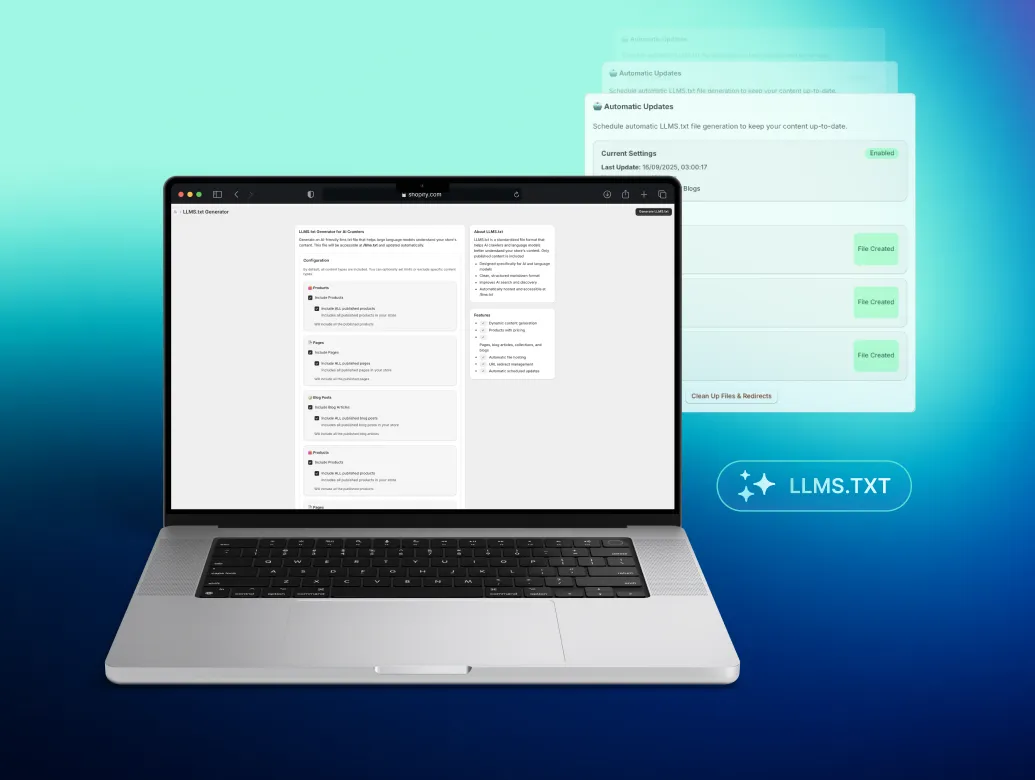
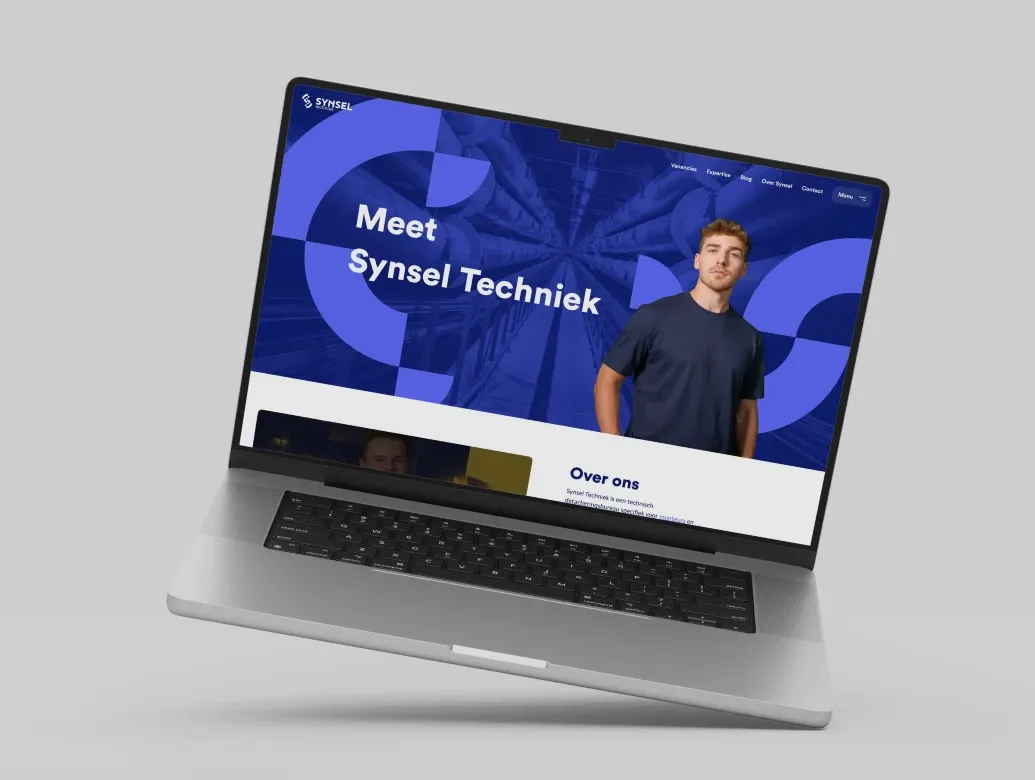

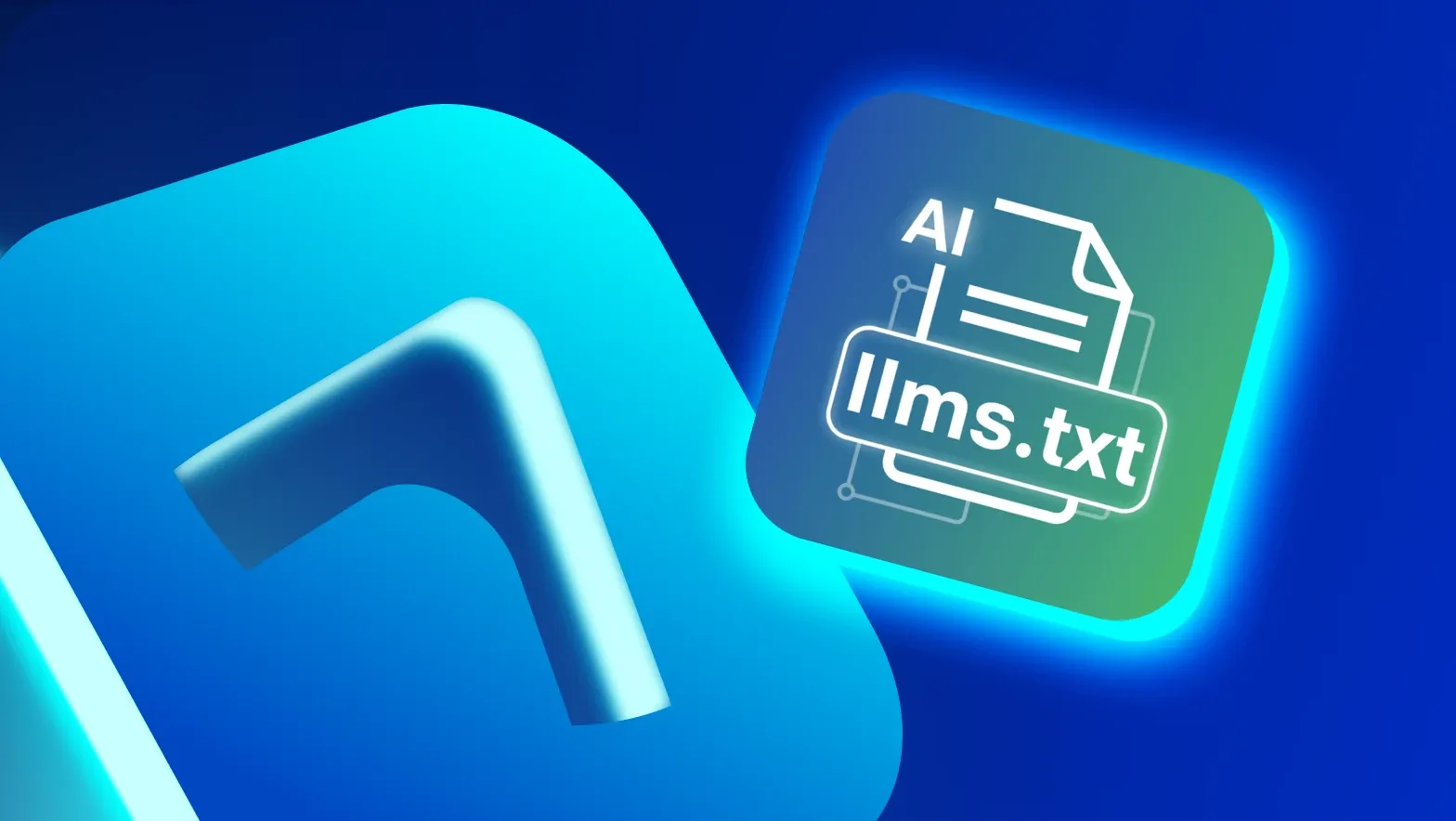



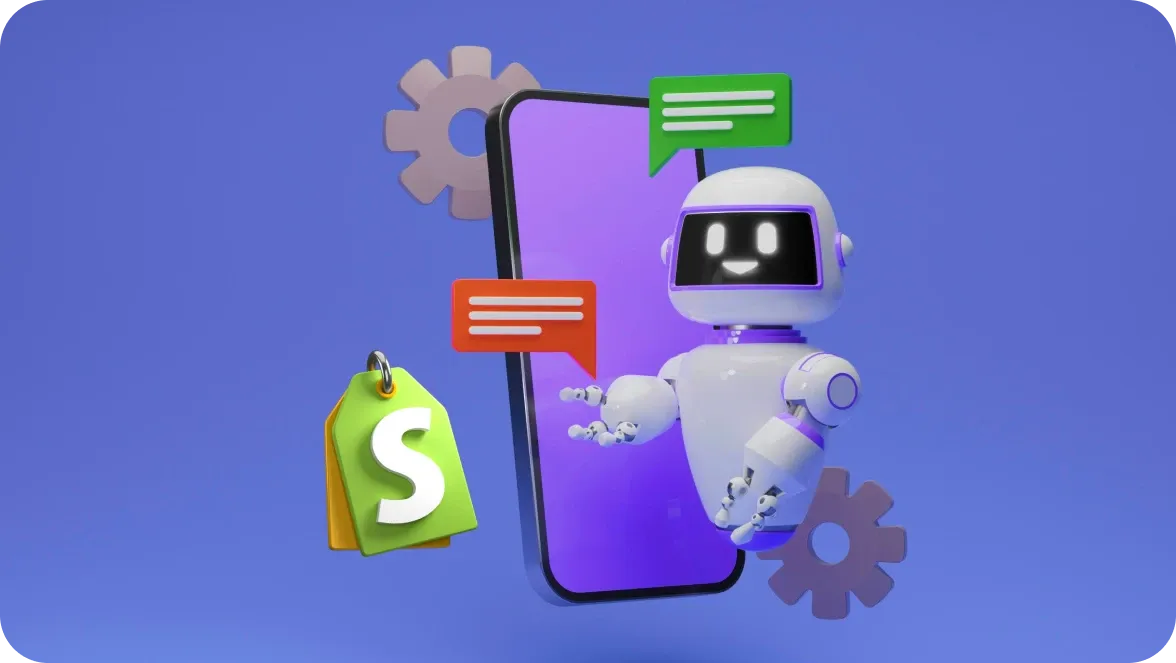
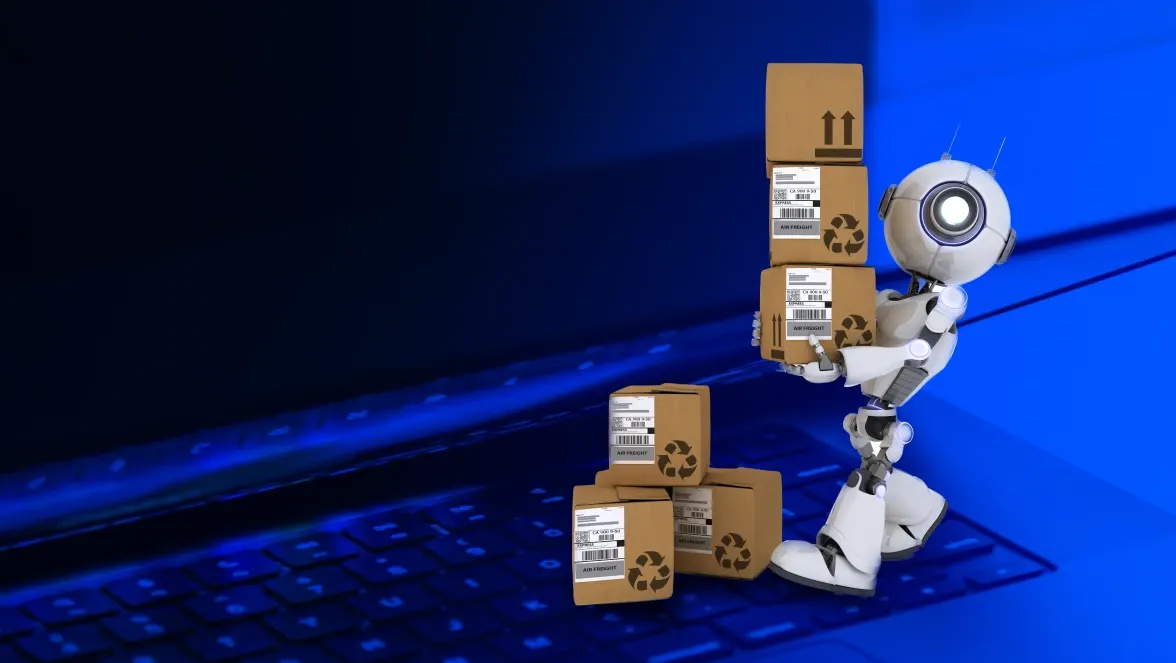


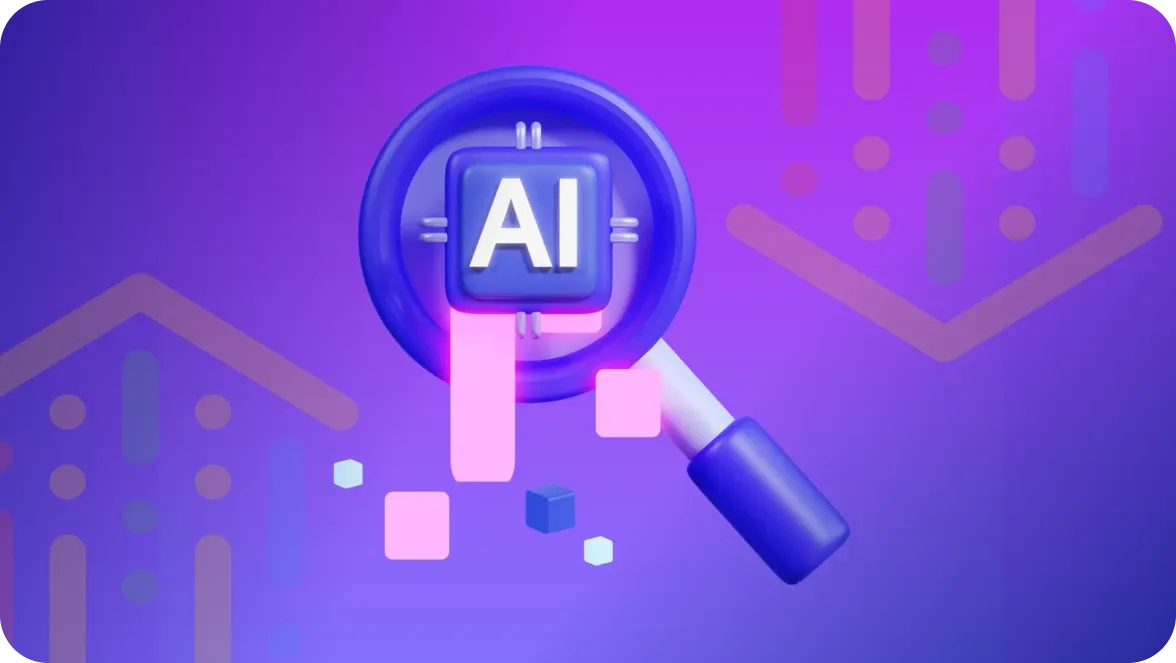
Was this helpful?
0
No comments yet